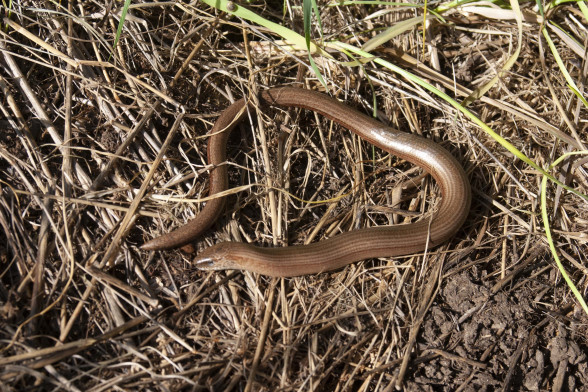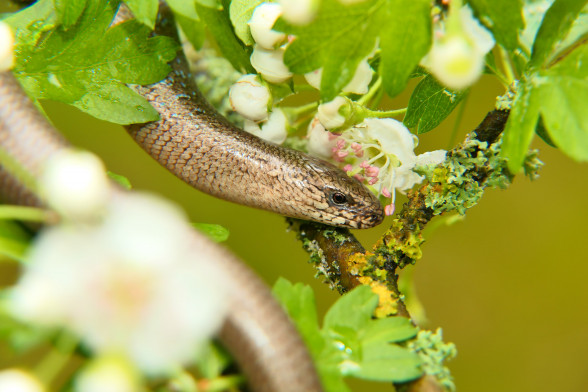
Slow worm (deaf adder)
Habitat
It lives in undergrowth rich in stumps and roots: forest edges, clearings, dry pine forests.
Active at dusk and at night. Winters in deep burrows (up to 80 cm); often several dozen lizards gather together.
Diet
They feed on slugs, earthworms and other invertebrates. Cases of cannibalism have also been noticed.
Important and interesting facts
The slow worm is a lizard, though it has no legs.
It is not poisonous.
The slow worm has several features that distinguish it from snakes. The eyes are small, with eyelids (snakes do not have eyelids). It has ear openings (snakes do not). Like snakes, slow worms have scales. But whereas slow worms feel smooth, many snakes have keels on their scales that make them rough to the touch. The slow worm changes its skin in stages (snakes change all their skin at once), 2-3 times a year. The tongue is relatively wide with a notch at the tip (narrow and split in snakes). Like many other lizards, the slow worms autotomize, meaning that they have the ability to shed their tails to escape predators. While the tail regrows, it does not reach its original length. The sexes can be distinguished by colour: the female’s back is usually brown with a coppery sheen and with brown or black sides, which may have shimmering spots, often with black longitudinal stripes on the back and sides; the male is greyish or coppery red-brown without stripes. Occasionally there may be blue spots on the back, more common in males than in females.
Information sources: latvijasdaba.lv, Wikipedia
Photos: redzet.eu, pixabay.com

